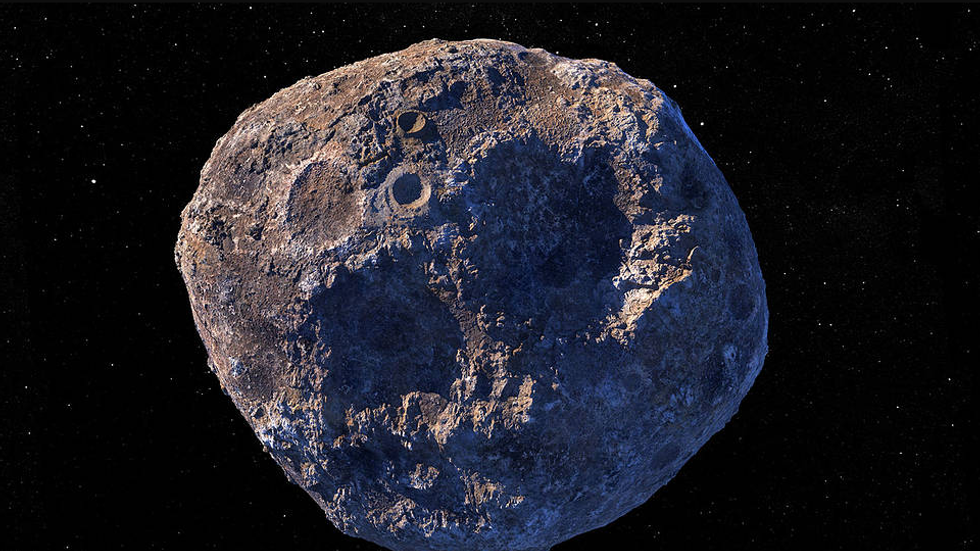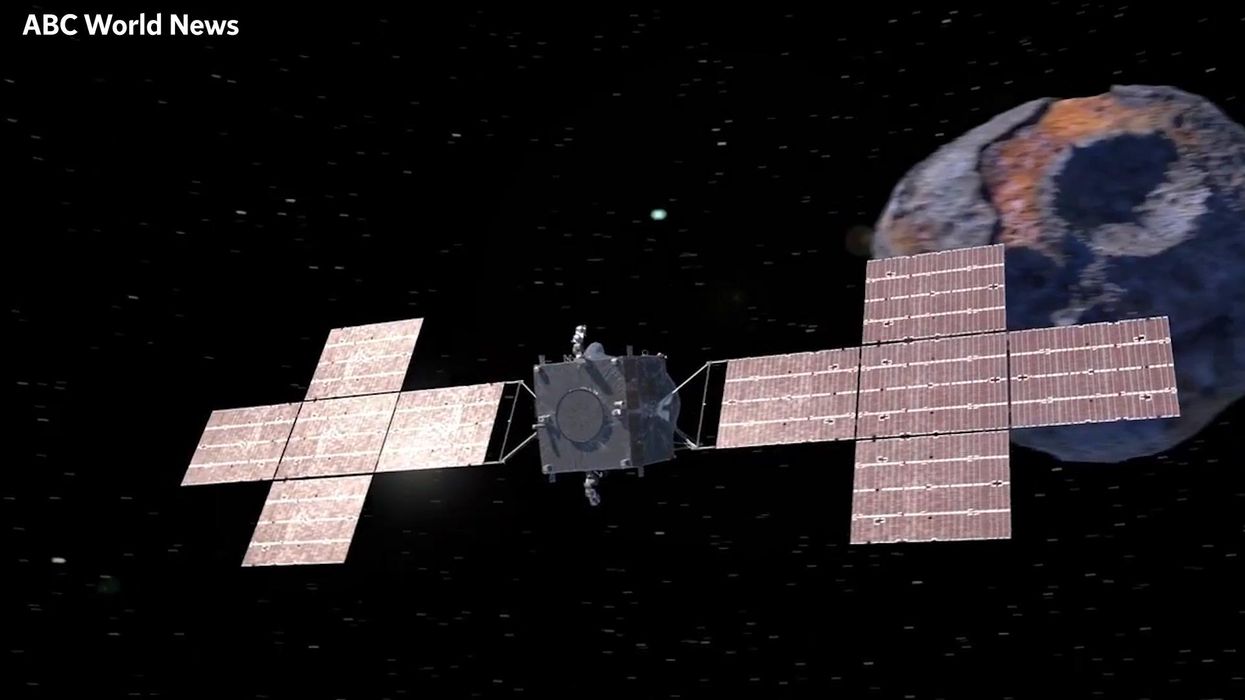Science & Tech
Harry Fletcher
Nov 01, 2022
he psyche asteroid that could make everyone a billionaire
ABC World News
Fancy becoming a billionaire overnight? No, we’re not pitching some get-rich-quick scheme, we’re talking about Nasa launching a new mission to an asteroid that could theoretically make us all incredibly wealthy.
Nasa is planning to observe and study an asteroid worth more than $10,000 quadrillion, containing enough precious metal that could make everyone on Earth a billionaire if divided out equally.
Psyche 16 - first spotted back in March 1852 - is a 124-mile-wide space rock that will be the primary focus of Nasa’s project.
The mission has been talked about for some time and was originally due to launch in August this year, however, it was hit by delays because of the need to review software.
Sign up for our free Indy100 weekly newsletter
Some feared that the project could have been abandoned altogether. The independent review board is still finishing up its report, but Nasa has now confirmed that the mission to Psyche 16 will go ahead and it’s planning a launch period beginning on 10 October 2023.

Thomas Zurbuchen, associate administrator of NASA’s Science Mission Directorate in Washington, said: “I appreciate the hard work of the independent review board and the JPL-led team toward mission success.
“The lessons learned from Psyche will be implemented across our entire mission portfolio. I am excited about the science insights Psyche will provide during its lifetime and its promise to contribute to our understanding of our own planet’s core.”
When it goes ahead, it will be the first exploration into a world of metal rather than rock and ice. The spacecraft would arrive at the asteroid four years after it sets off.
A team in California previously created a new temperature map to help NASA understand the asteroid’s surface properties. Usually, infrared images of a space rock only provide a fragment of data equivalent to a single pixel, but researchers could get 50-pixel resolution.
“The findings are a step toward resolving the mystery of the origin of this unusual object, which has been thought by some to be a chunk of the core of an ill-fated protoplanet”, researchers from the study said at the time.
They discovered that its surface was made up of at least 30 per cent metal, with further rocks on the surface containing metal grains.
Caltech’s Katherine de Kleer, assistant professor of planetary science and astronomy, added: “We think that fragments of the cores, mantles, and crusts of these objects remain today in the form of asteroids. If that’s true, it gives us our only real opportunity to directly study the cores of planet-like objects.”
Have your say in our news democracy. Click the upvote icon at the top of the page to help raise this article through the indy100 rankings.
Top 100
The Conversation (0)














